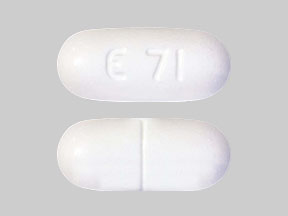Methenamine Disease Interactions
There are 3 disease interactions with methenamine.
Methenamine (applies to methenamine) crystalluria
Major Potential Hazard, High plausibility. Applicable conditions: Renal Dysfunction, Dehydration
The use of methenamine salts (i.e. methenamine hippurate or mandelate), but not the base, is contraindicated in patients with severe renal impairment or dehydration. Methenamine is excreted by the kidney and concentrated in the urine. In patients with low urinary output, the salts can precipitate and cause crystalluria.
References
- Klinge E, Mannisto P, Mantyla R, Lamminsivu U, Ottoila P (1982) "Pharmacokinetics of methenamine in healthy volunteers." J Antimicrob Chemother, 9, p. 209-16
- Gleckman R, Alvarez S, Joubert D, Matthews S (1979) "Drug therapy reviews: methenamine mandelate and methenamine hippurate." Am J Hosp Pharm, 36, p. 1509-12
- Australian Drug Evaluation Committee (1972) "Adverse effects of drugs commonly used in the treatment of urinary tract infection." Med J Aust, 1, p. 435-8
- (2002) "Product Information. Hiprex (methenamine)." Hoechst Marion Roussel
- (2002) "Product Information. Mandelamine (methenamine)." Parke-Davis
- American Medical Association, Division of Drugs and Toxicology (1994) "Drug evaluations annual 1994." Chicago, IL: American Medical Association;
Methenamine (applies to methenamine) gout
Major Potential Hazard, Moderate plausibility.
Methenamine mandelate (salts), should be avoided in patients with gout as it may precipitate urate crystals in their urine. A similar situation may arise in patients with a predisposition to the formation of uric acid stones.
References
- (2002) "Product Information. Hiprex (methenamine)." Hoechst Marion Roussel
Methenamine (applies to methenamine) liver disease
Major Potential Hazard, High plausibility.
The use of methenamine and its salts (i.e. methenamine hippurate or mandelate) is contraindicated in patients with severe hepatic impairment. Methenamine is hydrolyzed to ammonia and formaldehyde in the urine under acidic conditions. Patients with liver disease may already have elevated ammonia levels, which can cause or exacerbate hepatic encephalopathy. Methenamine hippurate has also been associated with isolated cases of transient elevations in serum transaminases. The manufacturer recommends periodic liver function tests during therapy, particularly in patients with preexisting liver dysfunction.
References
- Strom J, Jun H (1975) "Kinetics of hydrolysis of methenamine." Pharm Bull, 23, p. 651
- Gleckman R, Alvarez S, Joubert D, Matthews S (1979) "Drug therapy reviews: methenamine mandelate and methenamine hippurate." Am J Hosp Pharm, 36, p. 1509-12
- (2002) "Product Information. Hiprex (methenamine)." Hoechst Marion Roussel
- (2002) "Product Information. Mandelamine (methenamine)." Parke-Davis
- American Medical Association, Division of Drugs and Toxicology (1994) "Drug evaluations annual 1994." Chicago, IL: American Medical Association;
Methenamine drug interactions
There are 50 drug interactions with methenamine.
More about methenamine
- methenamine consumer information
- Check interactions
- Compare alternatives
- Pricing & coupons
- Reviews (99)
- Drug images
- Side effects
- Dosage information
- During pregnancy
- Drug class: urinary anti-infectives
- Breastfeeding
- En español
Related treatment guides
Drug Interaction Classification
| Highly clinically significant. Avoid combinations; the risk of the interaction outweighs the benefit. | |
| Moderately clinically significant. Usually avoid combinations; use it only under special circumstances. | |
| Minimally clinically significant. Minimize risk; assess risk and consider an alternative drug, take steps to circumvent the interaction risk and/or institute a monitoring plan. | |
| No interaction information available. |
Further information
Always consult your healthcare provider to ensure the information displayed on this page applies to your personal circumstances.


